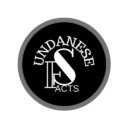Getting to Know Tritangtu: The Governance Pattern of Ancient Sunda
In addition to embracing monotheism, the Sundanese society in ancient times was governed by a system called Tritangtu. In old Sundanese manuscripts, the expression “Tritangtu di Buana” often appears, which means “Tritangtu on Earth.”
According to several scholars, Tritangtu functioned by integrating the authority of three institutions that held equal positions and powers. In doing so, it created a sense of prosperity for the community. Prosperity here had a broad meaning—beyond food security, it also included a well-preserved natural environment.
Although the Tritangtu pattern is no longer used in contemporary Sundanese governance, it remains deeply rooted in the Sundanese mindset, even to this day. Whether consciously or not, Sundanese people often act in accordance with this pattern in their daily lives. So, what exactly is Tritangtu? Let’s explore it in this article.
The Meaning of Tritangtu
Tritangtu is composed of two words. Tri means three, while Tangtu means a binding cord or knot. Therefore, Tritangtu can be interpreted as “three knots that bind human existence.” This is according to academic and cultural expert Hawe Setiawan in his book “Sunda Sambil Lalu” (2025). The three elements of Tritangtu are Rama, Resi, and Ratu.
Rama, according to Hawe, refers to a figure who can communicate the aspirations of the people to the king or ruler. In today’s context, this role is comparable to that of a member of parliament or people’s representative.
Next is Resi, a person who makes decisions with the goal of public welfare, guided by religious and spiritual considerations. According to the Kamus Sundadigi (Sundadigi Dictionary), Resi means priest or holy person.
The third pillar in the Tritangtu system is Ratu, the leader who holds executive power in the government. Usually referred to as Sang Prabu or Tohaan, meaning king or the one who is sovereign.
Equal Standing
Hawe Setiawan cites a statement from Suradipati, the acting King of Sunda after the Bubat incident. In a story set in the 14th century, when Bunisora Suradipati was about to hand over power to the descendant of Prabu Wangi—Wangisutah or Wastukancana—he gave a message about Tritangtu. In the narrative, Tritangtu is described as “three shelters of the kingdom that are equal, but have different duties.”
Tritangtu (sometimes written with a space as Tri Tangtu) is not only a political or governmental structure. It also permeated other aspects of Sundanese life, such as house architecture and the personal conduct of individuals.
Tritangtu Beyond Government Structure
As mentioned earlier, Tritangtu is not confined to politics and governance. It has been deeply embedded in the collective consciousness of Sundanese society at the time. This influence extended to many aspects, including the layout of villages, house structures, and even individual identity.
In Sundanese house architecture, we can refer to the research of Prof. Jakob Sumardjo, such as in his journal titled “Cosmology and the Sundanese Pattern of Three.” For instance, Sundanese traditional stilt houses are composed of three parts: the roof, living space, and undercroft.
The roof represents the sky, the living area represents humans, and the undercroft symbolizes the earth. Again, the pattern of three. Similarly, a house viewed horizontally also reflects this triadic structure: the front area (living room or guest area), the middle area (family room), and the back area (kitchen and bathroom). This layout is still common in Sundanese homes today: Living room – family room – kitchen/bathroom.
In other aspects, such as the Kujang weapon, the pattern of three also emerges. According to Prof. Jakob Sumardjo, the Kujang consists of: the sharp tip for piercing, the middle blade for cutting, and the part near the handle for striking.
In terms of personal conduct, Tritangtu manifests as integrity. It is embodied in tekad (intention), ucap (speech), and lampah (action), which must always be in harmony.
Read More:
You Won’t Believe These Hilarious Misunderstandings of Sundanese Words!







